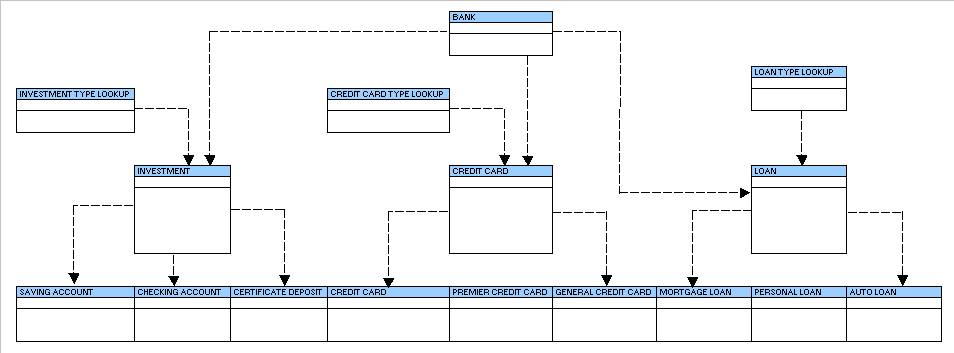Conceptual Data Modeling:
Conceptual data model includes all major entities and relationships and does not contain much detailed level of information about attributes and is often used in the INITIAL PLANNING PHASE.
Conceptual data model is created by gathering business requirements from various sources like business documents, discussion with functional teams, business analysts, smart management experts and end users who do the reporting on the database. Data modelers create conceptual data model and forward that model to functional team for their review.
Conceptual Data Model – Highlights:
- CDM is the first step in constructing a data model in top-down approach and is a clear and accurate visual representation of the business of an organization.
- CDM visualizes the overall structure of the database and provides high-level information about the subject areas or data structures of an organization.
- CDM discussion starts with main subject area of an organization and then all the major entities of each subject area are discussed in detail.
- CDM comprises of entity types and relationships. The relationships between the subject areas and the relationship between each entity in a subject area are drawn by symbolic notation (IDEF1X or IE). In a data model, cardinality represents the relationship between two entities. i.e. One to one relationship, or one to many relationship or many to many relationship between the entities.
- CDM contains data structures that have not been implemented in the database.
- In CDM discussion, technical as well as non-technical team projects their ideas for building a sound logical data model.
Consider an example of a bank that contains different line of businesses like savings, credit card, investment, loans and so on.
In example diagram below, conceptual data model contains major entities from savings, credit card, investment and loans. Conceptual data modeling gives an idea to the functional and technical team about how business requirements would be projected in the logical data model.
Conceptual Data Modeling – Example diagram:
What you can learn in our Conceptual Data Modeling Training?
- Understanding the business requirements
- Understanding the “as is” logical data model
- Understanding the “to be” logical data model
- Finding out “Gap Analysis”
- Why conceptual data modeling is required?
- Understanding Cardinality
- Zero or One or More Relationships.
- One or More Relationships.
- Zero or One Relationship
- One to One Relationship

Reach US!!!
- We provide online training in advanced OLTP Data Modeling and DIMENSIONAL Data Modeling.
- We also teach the data structures with Data Analytics Software “R”.
- We provide online Data Modeling Project Support when you get struck with projects that you are involved.
- We can analyse your Business Requirements, understand and suggest solutions to create OLTP Data Models and Dimensional Data models.
- We provide Data Modeling Interview Preparation Sessions with a lot of Data Modeling Interview Questions/Answers, which will help you to clear any interview.
If you are interested, please reach us at Training@LearnDataModeling.com or 91-9080157239


Nice quick explanation. Thanks, but the Example Diagram is not visible!
Hi, Thanks!.. I have updated the diagram…please check! if its still not clear, please click on it and it will open it on a new window!
Thank you very much for the explanation, it helped me a lot
thank you sir; really helpfull and also simple to understand. good luck and thanks again
Tks for this post, it’s releally useful